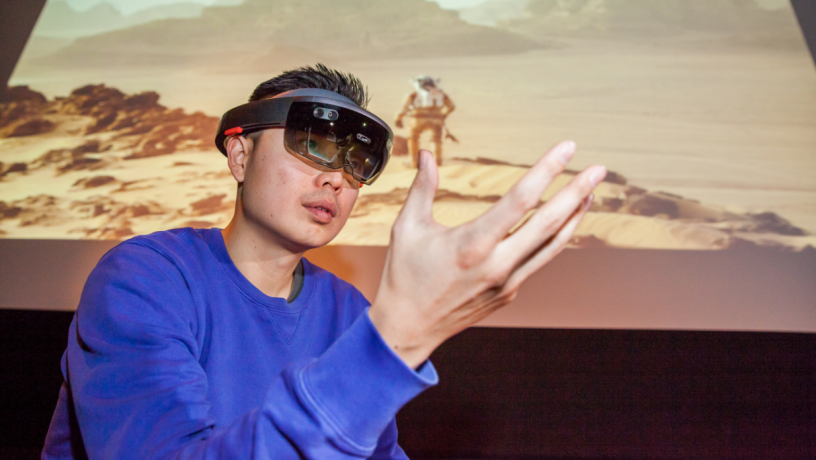Extreme Engineering: Exploring Mars through Augmented Reality
Even though humans have yet to set foot on Mars, Mars can be virtually brought to scientists on Earth with the help of some creative engineering, says Victor Luo. Luo, deputy lead of the NASA Jet Propulsion Laboratory’s Operations Lab, and his team are applying virtual and augmented reality to space exploration by developing robotics, advanced visualizations, and immersive 3D environments by which earthbound humans can explore places astronauts may not reach for decades or longer.

Victor Luo of NASA’s Jet Propulsion Laboratory demonstrates how scientists are using augmented reality to explore the surface of Mars. Watch the presentation here.
To explore space, we’ll have to build the most complicated machines ever, and crews will have to be more independent the further they go...This helps us make better decisions before we make any machinery.”
“Our work is about removing and diminishing the barriers to capability for users of machines, what’s taken away when we’re put in front of a screen,” Luo told a Columbia University audience at an Extreme Engineering talk on Feb. 23.
Luo is also developing interactive instruction manuals that are accessible through headsets and show human operators precisely what to do next (the system was used successfully by Captain Scott Kelly aboard the International Space Station), and a system to visualize and manipulate highly complex 3D designs before they are built—“like Tony Stark from Iron Man,” he joked.
Using his phone, Luo visualized the next Mars Rover right on stage, showing how designers can reimagine virtual craft on the spot.
“To explore space, we’ll have to build the most complicated machines ever, and crews will have to be more independent the further they go,” Luo said. “This helps us make better decisions before we make any machinery.”
Luo, whose work has contributed to better controls for video games in addition to advanced NASA equipment, was introduced by former NASA astronaut Mike Massimino, a professor of professional practice in mechanical engineering at Columbia and head of the Extreme Engineering series. The lecture, part of Columbia Engineering Week 2017, was co-hosted by the Columbia Space Initiative.
